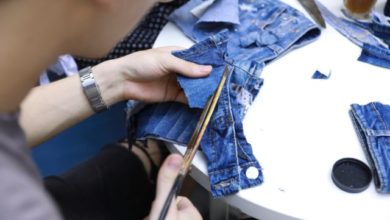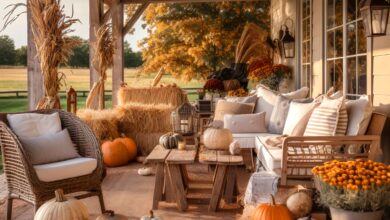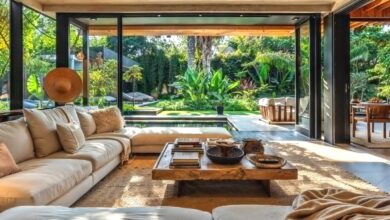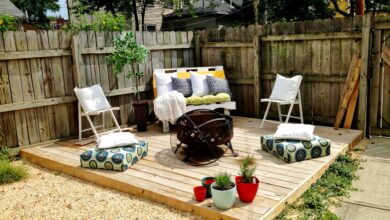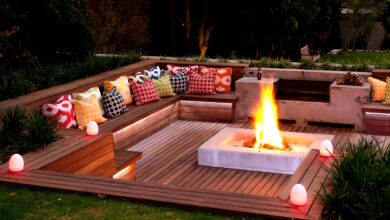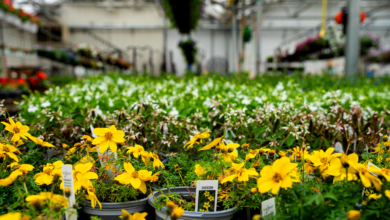How to Choose the Best Outdoor Furniture for Durability and Style
This comprehensive guide breaks down the essential elements you need to consider when you choose the best outdoor furniture for durability and style that stands your outdoor aesthetic.

Outdoor spaces have become the new living rooms. Whether it’s a sprawling backyard, cozy balcony, or a sleek rooftop terrace, investing in outdoor furniture has grown in popularity. But with so many options available, many homeowners are left wondering: how to choose the best outdoor furniture for durability and style, and most importantly—are they worth the hype?
This comprehensive guide breaks down the essential elements you need to consider when selecting high-quality outdoor furniture that stands the test of time while elevating your outdoor aesthetic.
Why Outdoor Furniture Matters
Outdoor furniture isn’t just about having a place to sit. It’s about creating an experience—an inviting extension of your indoor living space. The right pieces can turn a bland patio into a relaxing retreat or transform a garden into a luxurious entertainment area.
However, outdoor furniture must do double duty. It needs to look good and withstand exposure to sun, rain, wind, and possibly snow. That’s why understanding both style and durability is key when making your choice.
1. Understand Your Climate
Before diving into design preferences, assess your local climate. This determines the kind of materials and maintenance level your outdoor furniture will require.
Hot and Dry Climates
If you live in a desert-like environment, avoid wooden furniture that may crack or warp. Opt for materials like powder-coated aluminum or synthetic resin, which resist heat and dryness.
Humid or Rainy Climates
In tropical or coastal regions, moisture-resistant materials like teak, plastic composites, or marine-grade stainless steel are ideal. Mold and rust are common problems, so choosing rust-resistant hardware and breathable fabrics is crucial.
Cold or Snowy Climates
Freezing temperatures can cause some materials to crack or become brittle. In these areas, opt for furniture that can be stored indoors during winter or is made from durable polyethylene wicker or treated hardwoods like acacia.
💡 Pro Tip: Always check if the furniture is labeled as weather-resistant, UV-resistant, or all-weather.
2. Choosing the Right Materials
One of the most important factors when asking how to choose the best outdoor furniture for durability and style is the material. Here’s a breakdown of the most popular types:
Teak Wood
Pros:
- Naturally weather-resistant
- Elegant and timeless appeal
- Requires minimal maintenance
Cons:
- High upfront cost
- Needs periodic sealing to maintain original color
Style Factor: Ideal for traditional or coastal aesthetics.
Aluminum
Pros:
- Lightweight and rust-resistant
- Comes in modern designs
- Easy to clean and maintain
Cons:
- May blow over in windy areas
- Can get hot under direct sun
Style Factor: Perfect for contemporary and minimalist spaces.
Wrought Iron
Pros:
- Extremely durable and strong
- Has a classic, ornate appearance
Cons:
- Heavy and hard to move
- Prone to rust if not coated properly
Style Factor: Great for vintage, European-inspired settings.
Synthetic Resin Wicker
Pros:
- Looks like natural rattan but is weatherproof
- Lightweight and low-maintenance
- UV and fade-resistant
Cons:
- Poor-quality versions may crack or unravel
Style Factor: Ideal for casual, bohemian, or tropical vibes.
Recycled Plastic (HDPE)
Pros:
- Eco-friendly and long-lasting
- Resistant to fading, rotting, and cracking
Cons:
- Some designs may look too utilitarian
Style Factor: Best for modern, eco-conscious homes.
3. Prioritize Comfort and Functionality
Durability is essential, but comfort shouldn’t be compromised. When considering how to choose the best outdoor furniture for durability and style, ask yourself:
- Does the furniture offer ergonomic support?
- Are the cushions thick, water-resistant, and quick-drying?
- Are the seating arrangements practical for your space?
Cushion & Fabric Considerations
Outdoor cushions should be made from materials like Sunbrella, Olefin, or textilene, which are designed for outdoor use. These fabrics resist fading, moisture, and mildew.
Also, consider removable cushion covers for easy cleaning. Quick-dry foam inserts are a plus for rainy environments.
4. Match Furniture Style With Outdoor Aesthetics
The best outdoor furniture combines functionality with visual harmony. Choosing pieces that complement your home’s exterior and landscape helps create a cohesive look.
For Modern Homes:
- Look for clean lines, neutral tones, and sleek metals like aluminum or stainless steel.
For Traditional Homes:
- Opt for classic silhouettes in teak or wrought iron with soft, earth-toned cushions.
For Coastal or Bohemian Vibes:
- Choose light-colored synthetic wicker or driftwood-finished pieces with bright or tropical prints.
5. Think About Storage and Maintenance
No matter how durable your outdoor furniture is, proper care will extend its lifespan significantly. Think about:
- Foldable or stackable options for easy storage
- Protective covers to shield from dust, sun, and rain
- Regular maintenance routines, such as oiling wood or tightening screws
If you’re not keen on frequent upkeep, choose low-maintenance materials like aluminum, synthetic wicker, or HDPE plastic.
6. Consider Your Space and Layout
Space planning is critical when figuring out how to choose the best outdoor furniture for durability and style. Measure your area and sketch a layout before shopping.
Small Spaces
- Opt for multipurpose furniture like storage benches or folding chairs
- Bistro sets are great for balconies or tiny patios
Large Spaces
- Sectional sofas, daybeds, and dining sets make great use of ample space
- Create zones: one for lounging, another for dining, and maybe a fire pit area
📏 Tip: Leave at least 2-3 feet of space around furniture for easy movement.
7. Don’t Forget Accessories
To truly elevate your outdoor area, consider accessories that match your furniture in both style and resilience.
- Outdoor Rugs: Look for polypropylene options that resist mold and moisture.
- Lighting: Solar-powered or waterproof LED lights enhance ambiance.
- Umbrellas & Shade Sails: Essential in sunny climates; choose fade-resistant fabrics.
- Planters & Side Tables: Add charm and functionality.
Accessories play a vital role in tying the design together and increasing usability throughout the seasons.
8. Budget vs. Quality: Are Outdoor Furniture Sets Worth the Hype?
Premium outdoor furniture can seem expensive upfront. But here’s the reality: investing in high-quality, durable furniture often saves money in the long run. Cheaper pieces may need replacement every 1–2 years, while premium ones can last a decade or more with minimal upkeep.
What You Get with Premium Outdoor Furniture:
- Superior craftsmanship and materials
- Warranties and better customer support
- Enhanced aesthetic value
- Higher resale value for your home
In short, yes—durable and stylish outdoor furniture is worth the hype, especially when you consider cost-per-use over time.
9. Sustainability: A New Buying Factor
Today’s eco-conscious homeowners are asking more from their outdoor furniture brands. Sustainability is becoming a major trend. Look for companies that use:
- Recycled materials (like HDPE)
- Sustainable harvesting (e.g., FSC-certified teak)
- Ethical labor practices
- Minimal or recyclable packaging
Green doesn’t have to mean boring. Many eco-friendly outdoor furniture lines are as stylish as they are durable.
Final Thoughts: How to Choose the Best Outdoor Furniture for Durability and Style
Choose the right outdoor furniture requires a balance between practicality, aesthetics, and long-term value. By considering your climate, preferred materials, available space, and style preferences, you can create an outdoor haven that enhances your lifestyle year-round.
So if you’ve been wondering how to choose the best outdoor furniture for durability and style, remember:
- Prioritize materials that withstand your local weather
- Opt for comfort and functional design
- Select furniture that complements your outdoor decor
- Plan for storage and low maintenance
- And yes—they’re absolutely worth the hype when chosen wisely
With the right investment, your outdoor furniture will not only survive the seasons but also elevate your outdoor experience for years to come.


